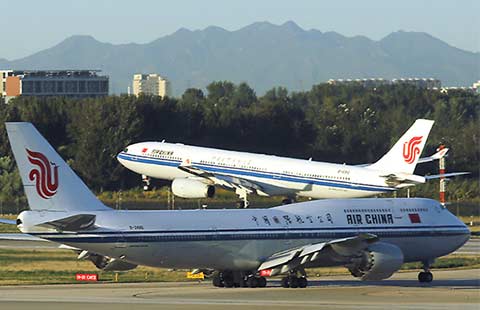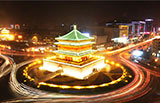1st hydropower station remains in active use
(Xinhua) Updated: 2012-01-03 09:30KUNMING - China's first hydropower station is still supplying voltage to nearby residents and attracting thousands of tourists, 100 years after being built in southwest China.
The Shilongba hydropower station on the Tanglangchuan river in Yunnan province was first built in 1910.
The construction of the station was considered a form of protest against colonialism at the time, as colonial France had spent the previous 7 years building the Yunnan-Vietnam Railway linking the province's capital of Kunming with the Vietnamese port city of Haiphone.
When France expressed interest in building a hydropower station on the Tanglangchuan, a group of local businessmen and academics led by businessman Wang Xiaozhai decided to raise money and build the station themselves.
The station was put into operation in 1912 and has since provided power to Kunming through a 32-km-long power line.
Outfitted with two sets of generators manufactured by Germany and Austria, the power station had an installed capacity of 480 kilowatts (kW) when it was completed.
One of the generators is still in use, and the station added two 3,000-kW generators in the 1950s, said Zhang Ming, director of the Shilongba Power Plant, which oversees the station.
The station has supplied more than 1 billion kilowatt-hours (kWh) of electricity since going into operation, Zhang said.
Tanglangchuan is a tributary of the Jinsha River and it was not very difficult to build a power station on it, according to Zhang.
"However, the station is of great significance, as it was China's first hydropower station and was built by patriotic citizens through fundraising," Zhang said.
China's hydropower industry has witnessed rapid development since the construction of the Shilongba station.
China's total installed hydropower capacity of 200 million kW ranks the first in the world, and the country has generated a total of 7.3 trillion kWh of electricity through hydropower, equal to that generated by 2.7 metric tons of coal.
Although the Shilongba station has generated less electricity in recent years due to decreased water flow in the river, the station has assumed a relatively new role as a tourist attraction. The station contains exhibits documenting the history of China's hydropower industry, Zhang said.
In 2006, the power station was listed as one of China's key cultural relics.
Zhang said more than 5,000 people visited the power station in 2011.
- Cheetah Mobile launches short video app to tap into online celebrity economy
- China's central bank names new deputy governor
- LeTV sells 10m smartphones, eyes global market
- Centrally-administered SOEs asked to raise profits by $15b by end-2017
- Highlights of the 19th China Beijing International High-tech Expo
- Tesla to wait for mass customers before building Chinese factory
- Geely raises $400 million in green bond sale
- Chinese government sets timetable for reform of centrally-administered SOEs

















